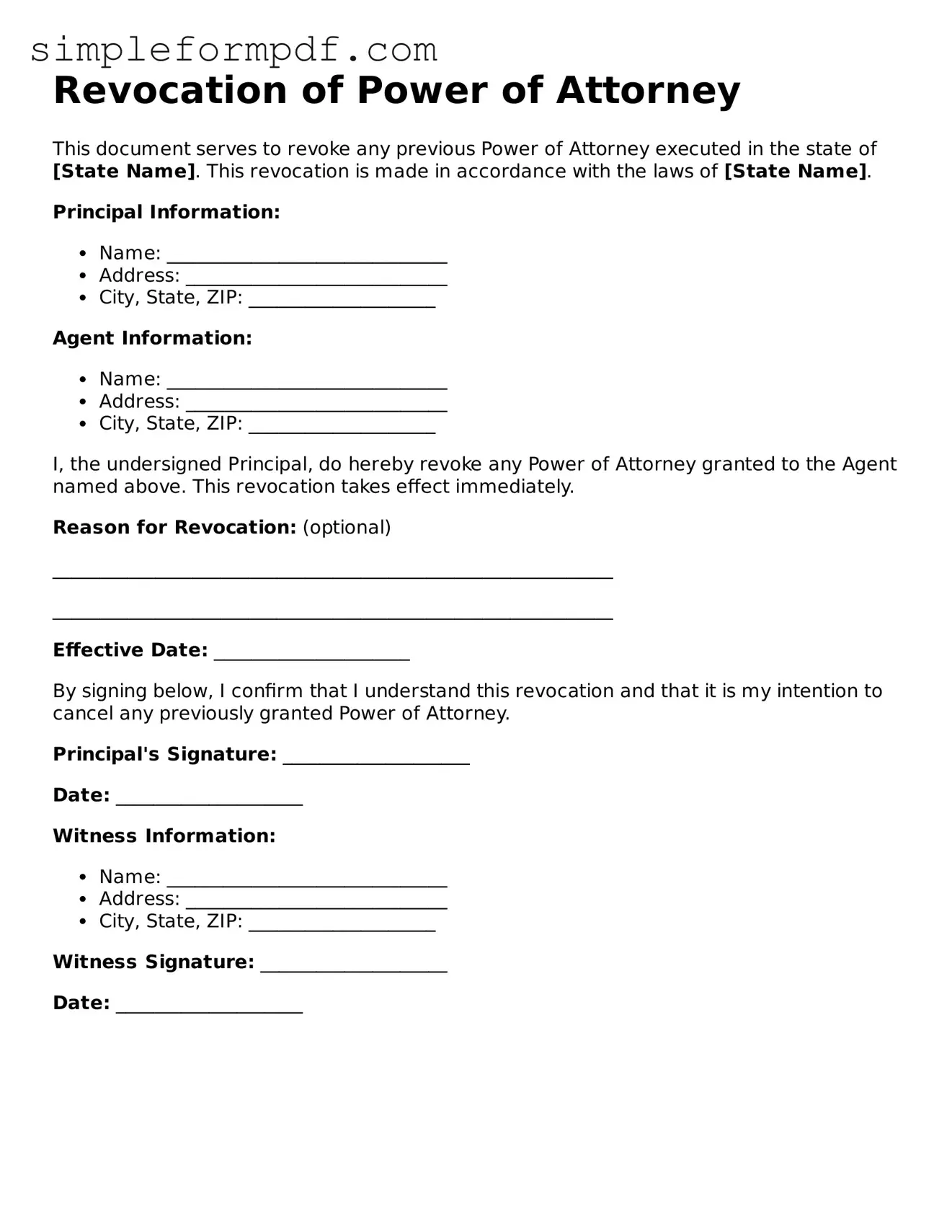Revocation of Power of Attorney
This document serves to revoke any previous Power of Attorney executed in the state of [State Name]. This revocation is made in accordance with the laws of [State Name].
Principal Information:
- Name: ______________________________
- Address: ____________________________
- City, State, ZIP: ____________________
Agent Information:
- Name: ______________________________
- Address: ____________________________
- City, State, ZIP: ____________________
I, the undersigned Principal, do hereby revoke any Power of Attorney granted to the Agent named above. This revocation takes effect immediately.
Reason for Revocation: (optional)
____________________________________________________________
____________________________________________________________
Effective Date: _____________________
By signing below, I confirm that I understand this revocation and that it is my intention to cancel any previously granted Power of Attorney.
Principal's Signature: ____________________
Date: ____________________
Witness Information:
- Name: ______________________________
- Address: ____________________________
- City, State, ZIP: ____________________
Witness Signature: ____________________
Date: ____________________
